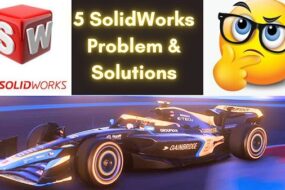
How to Design a High-Performance Electric Vehicle Motor: Electric vehicles (EVs) have gained immense popularity in recent years as an alternative to traditional gasoline-powered vehicles. One of the most important components of an EV is the electric motor that powers it. A high-performance electric motor is essential for ensuring that an EV is fast, efficient, and capable of delivering a smooth and enjoyable driving experience. In this article, we will discuss how to design a high-performance electric vehicle motor.
Before we get into the specifics of designing a high-performance electric vehicle motor, it is important to understand the basics of how an electric motor works. An electric motor consists of two main parts: the stator and the rotor. The stator is the stationary part of the motor, while the rotor is the rotating part. The stator is made up of a series of copper windings, while the rotor consists of a series of magnets. When an electric current is applied to the windings of the stator, a magnetic field is created that causes the rotor to rotate, thus generating torque.
Now that we have a basic understanding of how an electric motor works, let’s discuss the steps involved in designing a high-performance electric vehicle motor.
Step 1: Determine the Power Requirements
The first step in designing a high-performance electric vehicle motor is to determine the power requirements of the motor. This includes the power output required to drive the vehicle, as well as the voltage and current requirements of the motor. To determine the power requirements, the weight of the vehicle, the desired top speed, and the desired acceleration must be taken into consideration.
Step 2: Select the Motor Type
Once the power requirements have been determined, the next step is to select the type of motor that will be used. There are three main types of electric motors used in EVs: DC motors, AC induction motors, and permanent magnet motors. Each type of motor has its own advantages and disadvantages, so it is important to select the type of motor that best meets the power requirements of the vehicle.
Step 3: Determine the Motor Size and Configuration
Once the motor type has been selected, the next step is to determine the size and configuration of the motor. The size of the motor will depend on the power requirements of the vehicle, as well as the available space for the motor in the vehicle. The configuration of the motor refers to the way the windings are arranged in the stator. This can have a significant impact on the performance of the motor, so it is important to select the configuration that best meets the power requirements of the vehicle.
Step 4: Select the Materials
The materials used in the construction of the motor will have a significant impact on its performance. The windings of the stator are typically made of copper wire, while the rotor magnets can be made of a variety of materials, including neodymium, samarium-cobalt, and ferrite. The materials used in the construction of the motor will also impact its weight, so it is important to select materials that are lightweight yet durable.
Step 5: Design the Cooling System
A high-performance electric vehicle motor will generate a significant amount of heat, so it is important to design a cooling system that will keep the motor operating at the optimal temperature. This can be accomplished through the use of liquid cooling or air cooling systems.
Step 6: Test and Refine the Design
Once the motor has been designed, it is important to test it to ensure that it meets the power requirements of the vehicle and that it is operating efficiently. Any issues that are identified during testing can be addressed through refinements to the design.
In conclusion, designing a high-performance electric vehicle motor requires a significant amount of expertise and attention to detail. By following the steps outlined in this article, it is possible to design a motor that is fast, efficient,

















No Comments